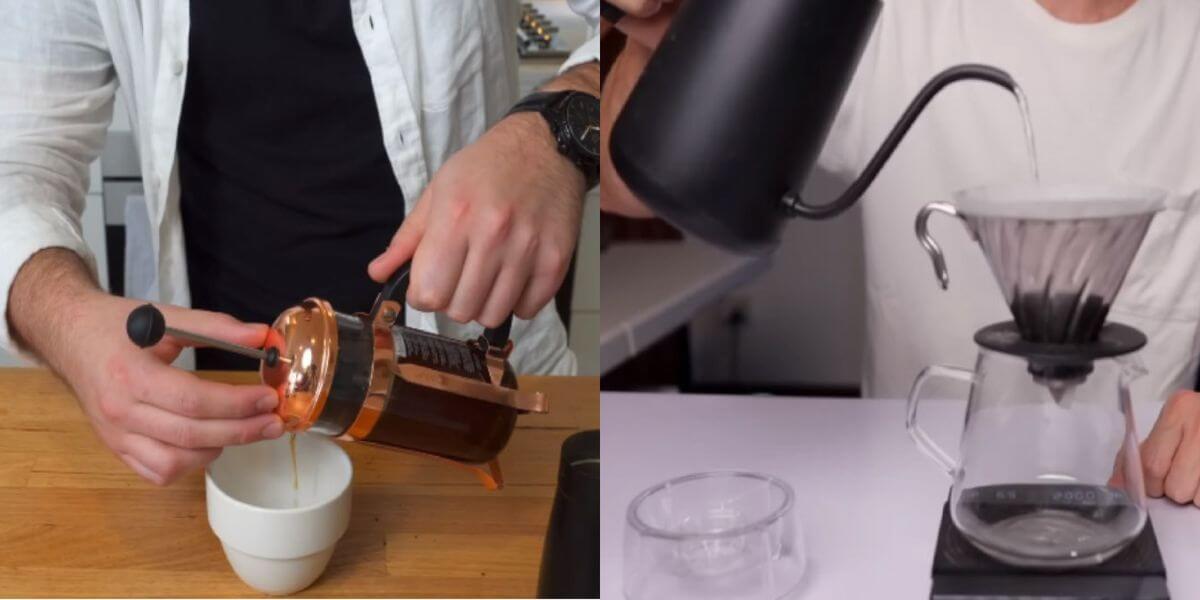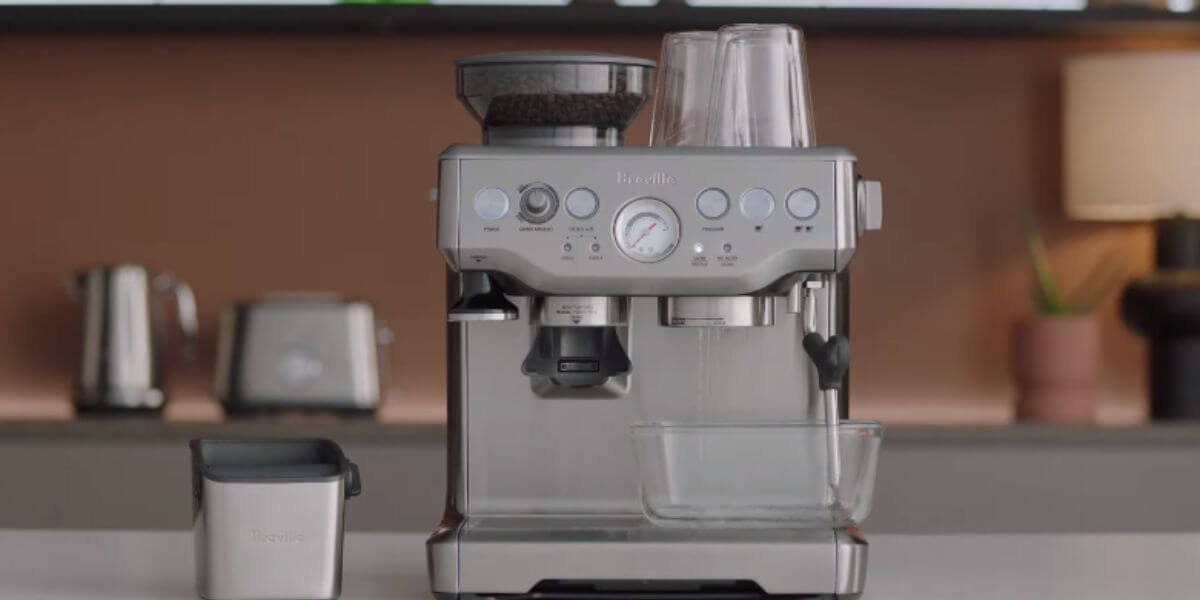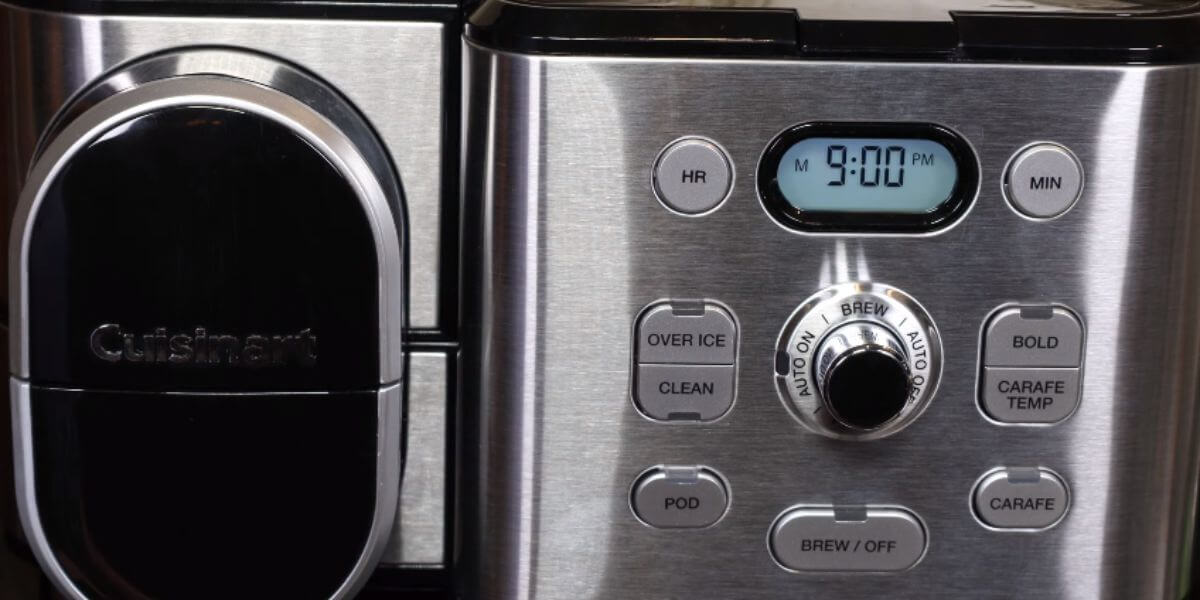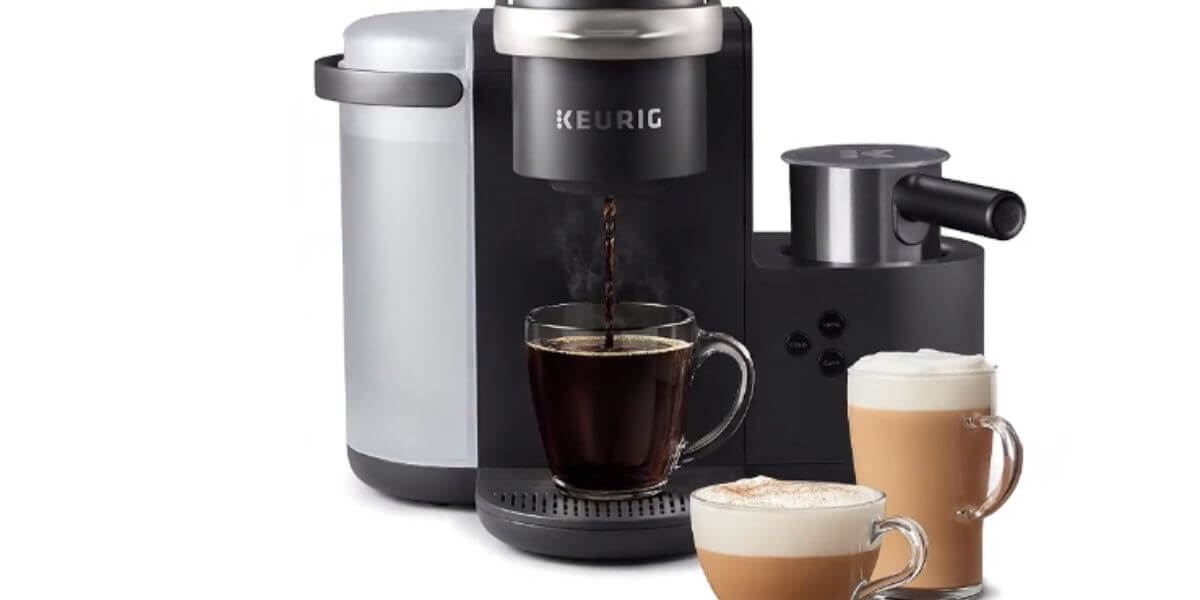Percolator vs Drip Coffee Maker: Which One Is The Best?
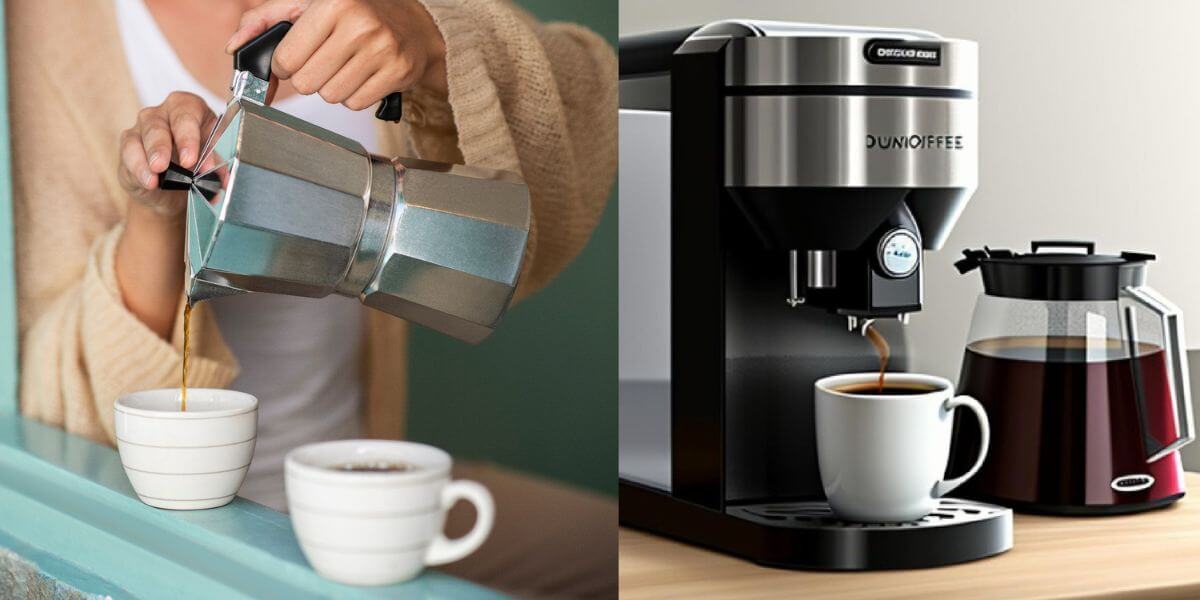

Coffee lovers often get into heated debates about whether to use a percolator or a drip coffee machine. Although fundamentally different, both approaches have advantages that appeal to various preferences.
In this in-depth look, we will discuss the subtleties of both percolators and drip coffee makers, exploring their benefits and drawbacks and identifying the essential variances that impact the coffee experience they provide.
How does a percolator work?
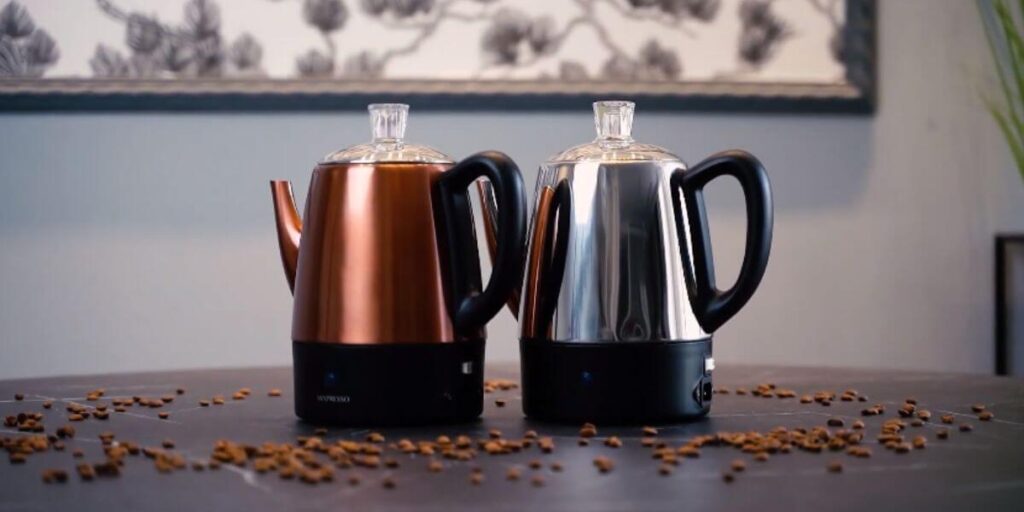
A percolator operates by using a cyclic process to brew coffee. Firstly, cold water is filled into the water chamber at the percolator’s base. Coffee grounds are placed in a separate section above the water chamber. The water boils when the percolator is heated, usually on a stovetop or electric burner.
As boiling occurs, steam pressure pushes the hot water up a central tube within the percolator, spreading over the coffee grounds. The water then trickles back into the chamber to be reheated and cycled.
The coffee grinds’ flavors, oils, and other ingredients are extracted repeatedly, making an aromatic and robust brew. However, careful monitoring is required to prevent over-extraction and bitterness, making timing a critical factor in achieving the desired flavor strength.
Pros & Cons of Using Percolators
Pros
Flavor Richness: Percolators revere their ability to produce a coffee with a rich and bold flavor profile, perfect for those who savor the intense essence of coffee.
Batch Brewing: These coffee contraptions are well-suited for brewing larger quantities, making them the ideal companion for gatherings, parties, and events.
Classic Appeal: The timeless design of percolators carries a certain nostalgia, appealing to those who appreciate vintage aesthetics.
Cons
Bitterness Risk: Over-brewing is a common concern with percolators, as the repeated circulation of water can lead to over-extraction and, subsequently, a bitter taste.
Brew Control: Achieving precise control over brewing variables such as water temperature and extraction time can be challenging.
Design Preference: The traditional appearance of percolators might not resonate with those who prefer modern and sleek kitchen appliances.
Recommended Percolators to Buy
Farberware Classic Stainless Steel Yosemite Coffee Percolator:
This stainless steel percolator boasts a timeless design and durable construction. With a clear knob on top to monitor the brewing process and a generous capacity, it’s perfect for small gatherings and solo brewing sessions.
PROS
CONS
Presto 12-Cup Stainless Steel Coffee Maker:
The Presto 12-cup Percolator offers a larger capacity for those who enjoy hosting friends and family. Its automatic keep-warm feature ensures your coffee stays at the perfect temperature without over-extraction.
PROS
CONS
Cuisinart PRC-12 Classic 12-Cup Percolator:
The Cuisinart PRC-12 brings modern convenience to the traditional percolator design. With a detachable cord for easy serving and a comfortable handle, it offers both practicality and style.
PROS
CONS
How Does a Drip Coffee Maker Work?
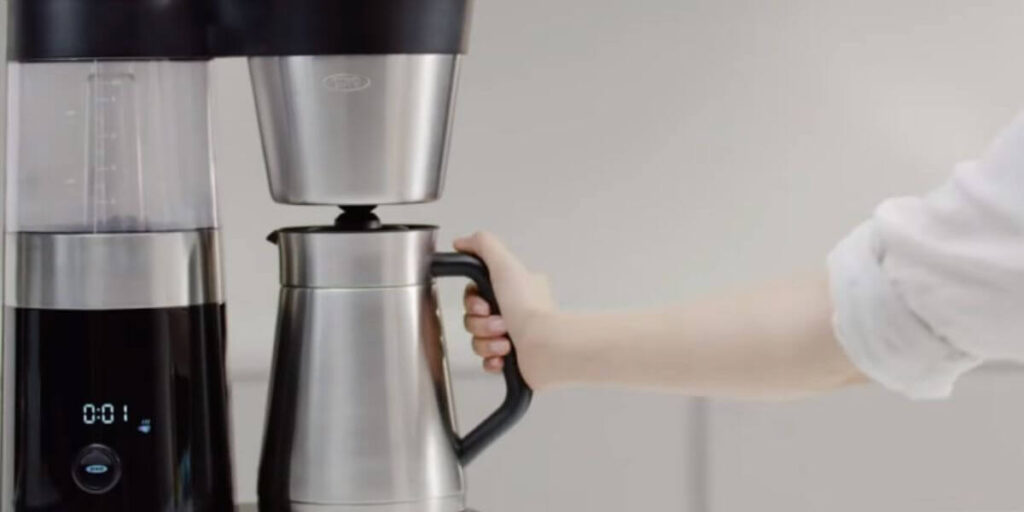

A drip coffee maker employs a straightforward method to brew coffee. Cold water is poured into a reservoir within the machine, then heated and transported to a drip area. Here, the hot water is evenly dripped over a coffee grounds filter.
Gravity aids the process as the water seeps through the grounds, extracting flavors and compounds. Below the drip area, the brewed coffee drips into a mug or pot. This gradual process ensures a consistent and controlled extraction, resulting in a smoother and well-balanced flavor profile.
Drip coffee makers come in various designs and sizes, catering to different preferences and budgets, making them a popular choice for those seeking a convenient and customizable coffee brewing experience.
Pros & Cons of Using a Drip Coffee Maker
Pros
Consistent Quality: Drip coffee makers deliver a consistent brewing experience, ensuring each cup maintains the desired flavor and strength.
Varied Selection: The market offers a wide array of drip coffee makers spanning different price points, accommodating budget-conscious buyers and those seeking premium options.
Modern Aesthetics: The contemporary design of drip coffee makers aligns well with current kitchen settings, adding a touch of sophistication.
Cons
Extended Brewing Time: Drip brewing takes more time than specific other methods, which might not suit those in a hurry.
Intensity Balance: While drip brewing offers a smoother taste, some coffee enthusiasts argue it can lack the boldness and intensity of other methods.
Flavor Nuance: Some discerning drinkers believe that drip coffee makers must more effectively capture the nuanced flavors and aromatic subtleties.
Recommended Drip Coffee Makers to Buy
Breville Precision Brewer
The Breville Precision Brewer offers versatility like no other. With customizable brewing parameters, including brew time, water temperature, and flow rate, it’s a coffee lover’s dream. Whether you prefer a classic cup or explore cold brew options, this machine adapts to your preferences.
PROS
CONS
Technivorm Moccamaster:
Renowned for its precise engineering and sleek design, the Technivorm Moccamaster is a favorite among coffee enthusiasts. With precise water temperature control and a unique showerhead design for even extraction, it consistently brews rich in flavored coffee.
PROS
CONS
Hamilton Beach FlexBrew
The Hamilton Beach FlexBrew caters to both single-serve and carafe brewing. Its dual functionality allows you to brew a cup using coffee grounds or K-Cups or opt for a carafe when entertaining guests.
PROS
CONS
Percolator Vs Drip: Key Differences
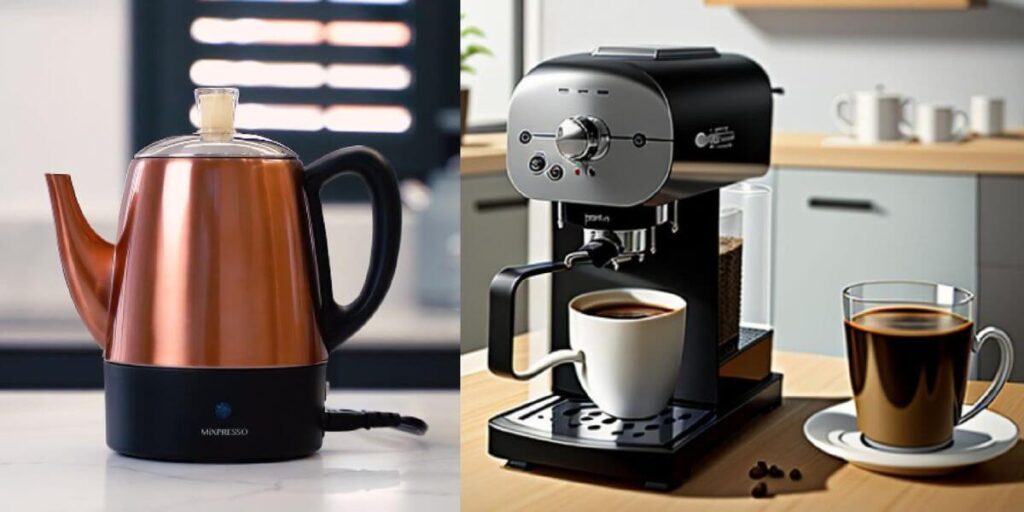

Regarding the showdown between percolators and drip coffee makers, several vital aspects set them apart, each contributing to the unique experience they offer. Let’s dissect these differences:
Brewing Process
Percolator: This classic brewing method involves cycling boiling water through a chamber of coffee grounds. As the water rises and falls through the grounds, it extracts flavors and compounds, producing a robust and intense brew. The percolation process is a hallmark of this method but requires careful monitoring to prevent over-extraction and bitterness.
Drip Coffee Maker: Drip coffee makers adopt a more straightforward approach. Hot water is dripped onto a bed of coffee grounds, and gravity takes over, pulling the brewed coffee through a filter and into a carafe. The process is consistent and controlled, resulting in a smoother, more balanced flavor.
Coffee Taste
Percolator: The percolation process creates a bolder and more intense flavor profile. The extended contact between water and grounds extracts a wealth of compounds, yielding a brew with robust flavors that resonate with those who seek a powerful coffee experience.
Drip Coffee Maker: Drip brewing tends to produce a milder and more nuanced flavor. While the flavors are well-rounded and balanced, they might reach a different depth and intensity than a percolator brew.
Coffee Strength
Percolator: The extended percolation process contributes to a more robust coffee. The repeated cycles of water passing through the grounds extract a higher concentration of compounds, resulting in a brew with greater strength.
Drip Coffee Maker: Drip brewing generally leads to a lighter strength. For individuals who want a less intense cup of coffee, the controlled dripping process extracts a moderate amount of coffee elements.
Portability
Percolator: Percolators tend to be bulkier due to their design, making them less portable. They are better suited for stationary use in homes or offices.
Drip Coffee Maker: Drip coffee makers are generally more compact and portable. Their sleek and streamlined designs allow them to fit comfortably in various settings, making them an excellent option for those on the move.
Ease of Cleaning
Percolator: Cleaning a percolator can be more involved due to its design and multiple components. The internal tubing and filters require thorough attention to prevent buildup.
Drip Coffee Maker: Drip coffee makers are easier to clean due to their simple design. Regular maintenance involves washing the carafe, filter, and drip area, which is less complex than percolators.
Price Range
Percolator: The price range of percolators can vary based on factors such as brand, materials, and features. Electric percolators might lean towards the higher end of the spectrum.
Drip Coffee Maker: Drip coffee makers cater to a wide range of budgets. There are options available across various price points, allowing consumers to choose according to their financial preferences.
Length of Use
Percolator: Percolators are often built with durability in mind. Their sturdy construction and design can contribute to a longer lifespan, making them a reliable investment.
Drip Coffee Maker: The longevity of drip coffee makers can vary depending on build quality and usage. While some models may have a different lifespan than percolators, regular maintenance can extend their usability.
Popular Alternative Option: French Press Method
In the world of coffee brewing, the French press stands as a beloved alternative to both percolators and drip coffee makers. This method, also known as the press pot or plunger pot, offers a distinctive approach that captivates coffee enthusiasts with its simplicity and ability to extract bold flavors.
Brewing Process
The French press is a tubular container made of glass or stainless steel with a pusher mechanism. Here’s how it works:
Coarse Grounds: The bottom of the French press is filled with coarse coffee grounds, and hot water is poured on top of them.
Steeping: The coffee and water steep together for a few minutes, allowing the flavors to infuse.
Plunging: After steeping, a metal or nylon mesh plunger is pressed down slowly, separating the coffee grounds from the liquid.
Extraction: As the plunger is pressed down, the mesh separates the coffee grounds from the brewed coffee, resulting in a brew with rich oils and intense flavors.
Flavor Profile
The French press method excels in capturing the full spectrum of coffee flavors, including the oils and finer particles that can be absent in other ways. This leads to a coffee with a robust and full-bodied taste, often characterized by its strong aroma and nuanced notes.
Advantages
Bold Flavors: The immersion-style brewing of the French press extracts essential oils and compounds, resulting in a coffee with a bold and intense flavor profile.
Control: Users have control over steeping time and coffee-to-water ratio, allowing for customization of flavor strength.
Simplicity: The French press requires no electricity or complicated machinery, making it ideal for camping or travel.
Considerations
Sediment: Since the plunger doesn’t filter out all fine particles, some residue may remain in the final brew.
Steeping Time: Oversleeping can lead to bitterness, so attention to steeping time is crucial.
Conclusion
As we reach the final chord of this comparison, the percolator vs drip coffee maker debate reveals itself as a beautiful melody of choice. Whether you resonate with the bold crescendos of a percolator or the soothing harmonies of a drip coffee maker, both methods promise a satisfying cup to accompany your mornings.
Frequently Asked Questions
Which method is recommended for those new to brewing?
Drip coffee makers are often more approachable for beginners due to their simplicity and consistent results.
Can I customize the strength of the coffee in both methods?
Absolutely! Adjusting factors like coffee-to-water ratio and brewing time lets you orchestrate the strength to your preference.
Are percolators and drip coffee makers readily available in stores?
While drip coffee makers are commonly found, percolators may require more hunting in specialty or online stores.
Are the same coffee grounds suitable for both methods?
Although possible, percolators may perform better with slightly coarser grounds to prevent over-extraction.
